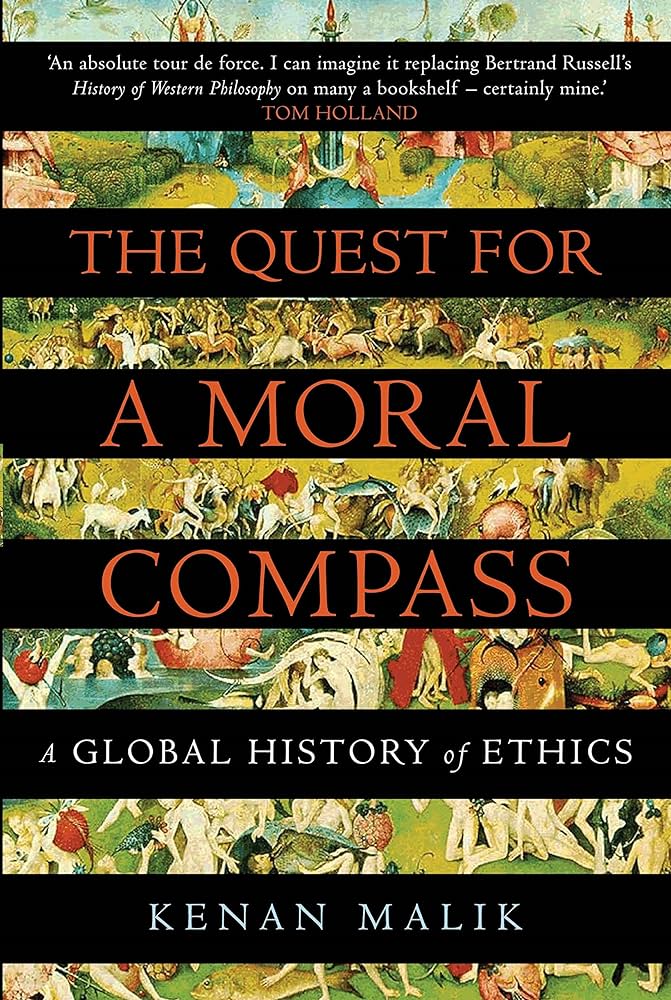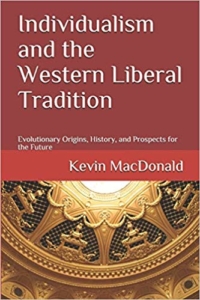Images of Black people are pressed on us so insistently these days, usually as models of some kind, that it is natural to ask just how admirable Black people are. For example, are they especially moral? Are they especially industrious, especially respectful of other people’s property, especially reliable, especially good to children, especially merciful, especially honest?
In the nineteenth century, White people were not impressed by Black people’s industriousness. A British explorer estimated that an average English labourer would accomplish more per day than twelve Africans. [1] In an experiment in Virginia, two White men brought in more crops in a certain period than did thirteen negroes.[2] A German professor found Africans indolent as well as careless, inattentive and unpunctual.[3] John Speke, the first White man to reach Lake Victoria, was amazed by their “inherent laziness”.[4]
Some people find Black people indolent today. Commenting on a video in 2022, a British carer wrote that the Africans he had worked with were invariably late for work and didn’t do much when they arrived.[5] They were always on their cell phones, which he found “rather frustrating”. What had struck another man about the Black workers at his mother’s care home was their complete lack of haste under any circumstance, even when their assistance was needed for a resident. An American stated that almost every Black person he had ever worked with had done his best to get paid for doing nothing. No one said that they found Black people hard-working.
It has been suggested that the reason Black people have a tendency to indolence is that they evolved in conditions where little effort was needed to survive.
The old explorers found that Africans stole compulsively. One described theft as their predominant passion.[6] Similar testimonies are quoted in another article. More recently, African leaders such as Jacob Zuma, Robert Mugabe and Laurent Kabila are notorious for having appropriated extremely large amounts of other people’s money. Today, theft in the form of looting is a more or less exclusively Black pastime.[7]
It could be that Black people lack the other races’ concept of private property. They certainly seem to be without some of their other mental constructs. Noting that African languages are missing certain basic moral terms, the philosopher Gedaliah Braun concludes that Africans lack the corresponding concepts.[8] Zulu has no word for obligation, a concept without which there can be no concept of a promise.[9] Zulus rarely keep their promises and never apologise when they break them, which suggests that they do indeed lack the notion of obligation.[10] Apparently Nigerians and Kenyans are the same. We see the lacking sense of obligation in African countries’ failure to repay their debts, which leads Western countries to “forgive” them.
Black people have difficulties with the concept of time, which is presumably connected with the fact that many African languages have no words for the past or future. Gedaliah Braun thinks this could be why gratitude, which is felt for something done in the past, is rarely seen in Africa.[11] Lacking a concept of the future could explain the African failure to plan ahead or maintain things, such as the South African power supply system. The historian Simon Webb comments on Black people’s apparent inability to arrive anywhere at an agreed time.[12] Africans use the term “African time” for their alternative to what the rest of us call time. If you are invited to an African party starting at eight o’clock, in Western time this means eight o’clock; in African time it means any time you like. West Indians have an equivalent expression. Americans speak of “CP time”—Colored people’s time.
So perhaps the Black concept of property is equally limited. For you or me, a person’s property is theirs by right. For a Black person it is perhaps only theirs as long as they can physically stop someone walking off with it.
In the nineteenth century, the explorer Richard Lander wrote that Africans did not appear to have the least affection for their children: “A parent will sell his child for the merest trifle”.[13] Sir William Harris wrote that Africans would sell their children for the sordid love of gain.[14] “So little do they care for their offspring”, wrote John Duncan, “that many offered to sell me any of their sons or daughters as slaves”.[15] All over Africa, according to Mungo Park, parents might sell their children.[16] Strangely enough, Herbert Ward found that the cannibals of the Congo showed more affection for their children than did the non-cannibals.[17] Only among the cannibals did he ever see a father kiss his child.
Black people still show less love for their children than they might do, as seen in the fact that social services departments are always short of suitable Black foster-parents for Black youngsters. The race produces more neglected or mistreated children than it will take. We sometimes hear of cases like that of Victoria Climbié, whose great-aunt took her in to increase the welfare payments she would receive. She ended up torturing the six-year-old to death.
If John Duncan saw little affection between Black parents and their children, he saw no more between Black adults, nor did Herbert Ward ever witness “any display of tenderness betwixt man and wife”.[18] The naturalist Samuel Baker concluded that there was no such thing as love in Africa: “the feeling is not understood”.[19] One rarely sees Black couples holding hands today.
John Duncan found that Africans cared little for animals.[20] A horse might be left tied up for days without food or water. Coming back from the fields after the experiment in Virginia, the Black labourers’ mules looked emaciated and forlorn whereas the White labourers’ ones were fat and sleek. Black people rarely keep pets today. Looking after animals does not appeal to them.
Black people kill people at an extraordinary rate: in America, more than twenty times the rate of Whites.[21] They can do it in gruesome ways and for no good reason. In 2022 a 73-year-old American woman died after her arm was separated from her body when she was dragged almost a block with it caught in the seat belt of her car, driven by a young Black man who with three others had surprised her by jumping into it.[22] All with pending murder charges, they were aged fifteen to seventeen. In Britain a young Black man stabbed a young White man to death on a bus for trying to stop him throwing potato chips at his girlfriend. Another killed a White man by bringing an iron horseshoe down on his head at a railway station after his victim’s brother had asked a member of his group to turn his music down on the train.[23]
Black people can take pleasure in gratuitous cruelty. The details of “necklacing”, said to have been Winnie Mandela’s favourite means of murder, are too grim to go into here; suffice it to say that spectators count it as a good thing that death takes quite a long time to come.[24] Braun quotes a press report on the trial of four young Black men who in 1993 killed an American woman, Amy Biehl, apparently because she was White, who was in South Africa trying to help Black people. When a witness told the court how the battered woman groaned in pain, the killers’ friends in the public gallery burst out laughing.[25]
No one who had read Sir Richard Burton’s accounts of his travels in Africa would have been surprised. He noted that for the African, cruelty seemed a necessary part of life: “all his highest enjoyments are connected with causing pain and inflicting death”.[26] Burton could not believe that this was only because Africans knew nothing of civilisation; he saw them as a case of arrested development, which had left them with “all the ferocity of the carnivore [and] the unreflecting cruelty of the child”. He compared the way they tortured and killed their prisoners to the way English boys tormented and killed cats.
One morning in the 1800s, a Westerner named Thomas Freeman saw lying in an African street “the mangled corpse of a poor female slave, who had been beheaded during the night”.[27] Later he saw natives dancing round the body “in the very zenith of their happiness”. Thomas Hutchinson, an Anglo-Irish explorer, wrote in 1857 that Africans appeared to take pleasure in cruelty. “The sight of suffering seems to bring them an enjoyment without which the world is tame.”[28]
Worth remembering, especially in view of the dogma of essential racial equality, is the statement made by Geoffrey Gorer in 1935 that a White man can no more think like a Black man than he can think like a bee.[29] Gorer did not see Africans as childlike, incidentally; he thought they were raving mad, “far madder than most of the inhabitants of our asylums”. Yes, at times they could act in a fairly normal fashion, but, he pointed out, so could many maniacs.
Another theory is that Africans cannot internalise imperatives. A study carried out in Senegal found that no matter how many times the Senegalese are told not to do something, it does not get into their heads that they mustn’t do it. Moral constraints must therefore be imposed from outside. In these terms Braun explains the fact that Black behaviour was kept within tolerable limits, as he puts it, in White-ruled South Africa, colonial Africa and the segregated American South, but descended into crime, drug use and unbridled violence when external constraints were removed. This is consistent with the way that the more the anti-racist British police refrain from checking anti-social Black behaviour, the worse it gets. The other races are better able to regulate themselves.
Many of the old explorers were struck by Africans’ dishonesty. Dixon Denham and Hugh Clapperton referred to “the inborn cunning and deceit of the native African. The truth is not in them.”[30] According to William Reade, Africans told a lie more readily than they told the truth; falsehood was not recognised among them as a fault.[31] Roualeyn Gordon-Cumming wrote that Africans were “remarkable for their disregard for truth”.[32] Paul Du Chaillu reported that lying was thought an enviable accomplishment among all the tribes; nowhere could a more thorough and unhesitating liar be found than in Africa.[33] John Speke observed: “Lying being more familiar to their constitution than truth-saying, they are forever concocting dodges with the view, which they glory in, of successfully cheating people”.[34]
We see the same today. Most people have come across a Nigerian fraudster of one kind or another. According to Peter Brimelow, in 1993 a senior fellow at the Center for Immigration Studies reported that in the view of law enforcement officials, fully 75 per cent of the Nigerians in America were involved in some sort of fraud.[35] Commenters on the video mentioned above acknowledged Nigerians’ skill at tricking people. “Given half a chance they will screw you over”, wrote one.[36] Another reported that three of his employees all said that Yorubas could not be trusted. “They told me many stories about the absolute craftiness of the people they worked with. My friend even used this phrase: ‘Don’t beat yourself up over getting conned. They are absolute masters of the craft’.”
Black people tell lies when others tell the truth. In 1976 an educational psychologist described a habitual wrongdoer from the West Indies who when caught red-handed would attempt to persuade his teacher that he had done nothing wrong, irrespective of the evidence.[37] She had met other Black boys like him and got the impression that this was the accepted philosophy of those with whom he lived. Backing this up, the Trinidadian race activist Darcus Howe stated that in Trinidad a guilty person was expected to lie.[38] He had done it himself after getting a girl pregnant as a teenager, protesting that he had never met her. “I never admitted the charge. I stuck to my guns”, he wrote, as if proud of his refusal to own up. While lying himself, a guilty West Indian accuses his accusers of lying. Darcus Howe played this game when defending himself in court in 1970 against charges of riot and affray. The police had fabricated their evidence, he asserted, although he went on to write: “Bricks, stones, bottles, any ammunition at hand we threw at the police”.[39]
In 2023 a chief constable wrote that young Black men rarely admit that they have committed crimes.[40] It is because Black criminals generally plead not guilty that they receive longer sentences than more honest people who have committed similar offences.
A Black woman who told one ridiculous lie after another was the former reality-television star Ariel Robinson. After being voted America’s worst cook, she came back into the news in 2021 having adopted a White child and then, when the girl was three, beaten her to death.[41] At first she blamed the fatality on her seven-year-old son, then said that the girl had drowned from drinking too much water.[42] As she must have realised, it was known that the death was caused by physical violence. Equally surprising, one might think, are the résumés Black people submit that cannot possibly be true,[43] and the telephone interviews they give in the names of other people, who will be seen to be incompetent as soon as they start their new jobs.[44]
Black people are never readier to lie than when blaming something they have done on Whites. In 2000, a young Black man in Birmingham claimed to have been set on fire by racists in what the police described as a sickening racial attack.[45] It turned out that he had been trying to set fire to a car.[46] In Leicester, a young Black man who had a broken ankle told the police that he had been assaulted by five White youths with an iron bar. He had been felled by the walking stick of an old lady whose handbag he had been trying to snatch.[47] When pedestrians in Notting Hill noticed that the finger of a young Black man was bleeding, he told them he had been racially assaulted by a White man in the man’s house. They called an ambulance for him. He had cut his finger while stabbing the man to death, presumably having broken into his house and been surprised to find him there.[48] These three incidents occurred within a few weeks of each other, which suggests that this kind of thing happens all the time.
It is not surprising that Blacks blame Whites for their misdeeds since Whites are the first to blame themselves. They do not blame Black people for failing to work but blame themselves for not employing them.[49] They do not blame Black people for not saving money but describe them as deprived, meaning by them, by White people. They do not blame Black people for being constantly at war with other Black people in Africa but blame themselves for drawing the borders between African countries in the wrong places. When Victoria Climbié died in 2000, her great-aunt was not blamed for killing her so much as social services were blamed for not stopping her. By contrast, when a White woman, Lucy Letby, was convicted of killing seven babies in 2023, she was described as evil incarnate.
Other White theories include the idea that the reason Blacks do not do well in school is that the schools are underfunded, that the reason they do poorly in aptitude tests is that the tests are biased, and that the reason they are stopped and searched by the police is that the police are out to get them. If Whites can think of no better explanation of an unwanted racial difference than slavery, they blame that, thereby making sure that they are never without a way of assuming responsibility for Black behaviour. Black people only copy them by giving them that responsibility.
Accusing Whites of being anti-Black has been a standard Black strategy since at least the Second World War. Referring to Black airmen, a Jamaican activist told V. S. Naipaul: “Whenever they was in any real trouble, I used to tell them: ‘Boy, your only hope is to start bawling colour prejudice’.”[50] Later, a Black doctor who was found guilty of gross negligence and incompetence and had his license suspended because of his “inability to perform some of the most basic duties required of a physician”, called himself the victim of a racist medical system. [51] According to an American cop, every Black person who is arrested by a White officer describes the police as racist.[52]
A Black speciality is the race hoax. To mention three well-known ones, in 1987 Tawana Brawley, aged sixteen, appeared with excrement smeared over her claiming to have been abducted by a group of White policemen and abused in a wood for four days and nights. She had been at home all the time, where she had smeared the excrement over herself. In 2006 Crystal Mangum, a stripper, accused three members of the Duke University men’s lacrosse team of gang-raping her. She made it up. In 2019 Jussie Smollett paid two brothers to help him appear to have been racially attacked outside his apartment building.
In the twelve months to December 2017, more than a hundred race hoaxes were counted in America, including those of the Black student who scrawled anti-Black graffiti at an Air Force Academy school in Colorado Springs, the one who did the same at Eastern Michigan State University, the one at Kansas State University who wrote the word “Nigger” on his car, and the one at St Olaf’s College in Minnesota who wrote it on her car.[53]
Showing how attached White people are to the idea of White transgression, harsh treatment of those at first assumed to be responsible does not necessarily stop when an event is found to be a hoax. At Colorado Springs, the Commandant assembled the student body in a hall to give it a severe talking to. When it turned out that no White cadet was guilty, he did not turn on the cadet who was guilty but defended his original remarks. “Regardless of the circumstances under which those words were written, they were written”, he observed, “and that deserved to be addressed”.[54] Anyone who failed to get his drift was not welcome at the school, he said. In other words, woe betide any White student who did what no White student had thought of doing.
Hoaxers are encouraged by the media, who have an insatiable appetite for stories, true or false, of White racial misbehaviour. With their outraged editorials and demands for an end to presumed bigotry they draw pity to these vicious people. The public respond by holding candlelit vigils to show how sorry they are about the dreadfulness of Whites, until it becomes apparent that the incident was a hoax, at which point they have to go back to their lives of dreary innocence.
So-called Black history consists largely of lies. In 1989 the authors of the “Portland Baseline Essays” told us that Black people invented gliders in ancient times and perhaps electrochemical storage batteries too.[55] Now we hear that they invented the electric light bulb, the spark plug, the cell phone and the internet.[56] The only reason we didn’t know this before, say the historians, is that White people try to cover up evidence of Black originality. They also tell us that Black people have been in Britain since at least Roman times rather than just since 1948[57] and that they reached North America hundreds of years before Whites did.[58]
In fact the absence of inventions and heroic journeys by Black people is complete. Black people have invented nothing since the bone-tipped harpoon 35,000 years ago. Not the wheel, not written language, not even a lamp with an oil-soaked wick to help them find their way in the dark did Black people invent in all those dozens of millennia. Peanut butter itself, supposedly a crowning Black achievement, was not invented by a Black person.[59] Nor is there any reason why it should have been. Black people are not the inventive type. As for great expeditions, it was others who left Africa and went on, after interbreeding with Neanderthals and in some cases Denisovans, to create civilisations elsewhere; today’s Blacks are the descendants of those who stayed where they were and have only the original human DNA. Africans were not even the first to reach Madagascar, 220 miles off the African coast; people of another race got there first after sailing almost 5,000 miles. But again Black people should not be mocked for failing to discover Madagascar. It is not in them to explore.
It might seem obvious that the tall tales of “Black history” come out of an inferiority complex, but against this is the fact that Black people rarely seem perturbed by their lack of inventiveness or adventurousness. Perhaps, then, the stories simply illustrate the Black love of theft. Seeing inventions and discoveries of value, Black people appropriate them as they might appropriate anything of value.
Just as baseless as “Black history” is the idea that Black people endure “institutional racism”. If by this is meant that institutions discriminate against them, the opposite is true. The whole “diversity” drive is devoted to discriminating in their favour. But usually “institutional racism” just means that the races’ circumstances differ, as in Black people tending to pass fewer exams than Whites, have less money and be more likely to go to prison. But this only shows that the races themselves differ, nor is it necessarily Whites who are at the top of the tree in such regards. In Britain it is more likely to be Gujaratis or the Chinese. In America too, people from South and East Asia are notably successful and law-abiding. But Blacks like to make their circumstances into a sob story, or a guilt story, to lay at the door of Whites.
In the case of truth-telling, Black people do not lack the concept. They can grasp this; what they cannot do is see why they should apply it if they think that an advantage might be gained by lying. What is missing is again the sense of obligation, in this case the obligation to be honest. It is perhaps in lacking this basic aspect of the most basic requirement of morality that Black people differ most from the other races.[60]
So we have an answer to our question. No, Black people are not especially moral.[61] From this point of view it seems that we are being shown the wrong models.
[1] This note and others below refer to Hinton Rowan Helper (“HH”), compiler of The Negroes in Negroland, 1868, New York: G W Carleton. Helper’s notes give abbreviated references, such as, here, on p. 122, to “Duncan’s Africa, Vol. I., page 40”. Where possible these have been expanded to give the author’s full name and the title and date of the book presumably referred to. In this case, HH quotes John Duncan, 1847, Travels in Western Africa, p. 40.
[2] On p. 124 HH quotes the Raleigh Register, Jan. 17th 1868. This could be a typo since his book was published in 1866.
[3] On p. 122 HH quotes Hermann Burmeister, 1853, The Black Man: The Comparative Anatomy and Psychology of the African Negro, p. 15.
[4] On p. 123 HH quotes John Hanning Speke, 1863, Discovery of the Source of the Nile, p. 27.
[5] Viewers’ comments on History Debunked, March 25th 2022, “The thing with Nigerians”, https://www.youtube.com/watch?v=4elhOK34tk4.
[6] On p. 96 HH quotes Duncan, 1847, op cit, p. 141.
[7] Not only do we see Black people breaking into shops and looting them whenever there is a riot; in several English cities looting high-street stores looks set to become a weekly routine for young Black people (History Debunked, Aug. 4th 2023, “Disorder on the streets of England is on the increase, although we don’t like to talk about it”, https://www.youtube.com/watch?v=b53l2k8TuI0).
[8] American Renaissance, Oct. 15th 2017 (first published Feb. 2009), “Racial Differences in Morality and Abstract Thinking” by Gedaliah Braun, https://www.amren.com/news/2017/10/morality-racial-differences/.
[9] Gedaliah Braun writes that the Zulu dictionary does contain a word for obligation, defining it as “as if to bind one’s feet”. However, he says that the compilers did not take it from the language but added it themselves (American Renaissance, Oct. 15th 2017, op. cit.).
[10] A Zulu informed Braun that when a Zulu promises, he means “Maybe I will, maybe I won’t” or perhaps “I’ll try” (American Renaissance, Oct. 15th 2017, op. cit.).
[11] The rarity of gratitude in Africans was noted in the 19th century, when Samuel Baker found them “utterly obtuse to all feelings of gratitude”, even upon being freed from slavery (on p. 134 HH quotes Samuel Baker, 1870, The Great Basin of the Nile, pp. 53 and 197).
[12] History Debunked, April 5th 2022, “The psychopathology of lateness as a minority behavioural trait”, https://www.youtube.com/watch?v=XptapQIv9OE.
[13] On p. 153 HH quotes “Lander’s Africa”, p. 348. This could be Robert Huish, 1836, The Travels of Richard Lander into the Interior of Africa, or Richard Lander could have written a book.
[14] On p. 39 HH quotes Sir William Cornwallis Harris, 1843, Major Harris’s Sports and Adventures in Africa, p. 314.
[15] On p. 39 HH quotes John Duncan, 1847, Travels in Western Africa, p. 79.
[16] On p. 87 HH quotes Mungo Park, 1815, The Journal of a Mission to the Interior of Africa, in the Year 1805, p. 216.
[17] Ward 2019, op cit, p. 95.
[18] Ibid., p. 95.
[19] On p. 115 HH quotes Baker 1870, op cit, p. 148.
[20] On p. 145 HH quotes Duncan op cit, Vol. I, p. 90.
[21] American Renaissance, March 24th 2023, “A harsh new light on race and murder”, https://www.bitchute.com/video/DkJclYNa5D9S/. The multiple of twenty-plus should not be too surprising. According to Wikipedia, Jamaica’s homicide rate is 75 times Norway’s.
[22] The Red Elephants, March 24th 2022, “WHITE GRANDMOTHER HAS ARM LITERALLY RIPPED OFF BY BLACK TEENS, MEDIA IS SILENT”, https://www.bitchute.com/video/WEUMJkPp4ZfT/.
[23] The New Culture Forum, July 15th 2023, “Anti-Social Behaviour: Would YOU Challenge Someone in Modern Britain? BBC Becomes its Own Soap Opera”, https://www.youtube.com/watch?v=hc9_q8m9dNo. Sources for the crimes: (1) Evening Standard, March 9th 2007, “Boyfriend murdered for stopping thug throwing chips at his girlfriend”, https://www.standard.co.uk/hp/front/boyfriend-murdered-for-stopping-thug-throwing-chips-at-his-girlfriend-6581291.html and other sources; (2) BBC, March 27th 2023, “Reading Station death: Horseshoe murder-accused feared attack, jury hears”, https://www.bbc.co.uk/news/uk-england-berkshire-65091271.
[24] For those who want to know about necklacing in detail, Gedaliah Braun quotes a description (American Renaissance, Oct. 15th 2017, op. cit.).
[25] Occidental Observer, Aug. 23rd 2023, “Amy Biehl, Forgiveness, And the Nature of ‘Hate’” by RockaBoatus, https://www.theoccidentalobserver.net/2023/08/23/amy-biehl-forgiveness-and-the-nature-of-hate/.
[26] Occidental Observer, March 24th 2021, “Sir Richard Francis Burton: Explorer, Linguist, Race Realist” by Christopher Donovan, https://www.theoccidentalobserver.net/2021/03/24/sir-richard-francis-burton-explorer-linguist-race-realist/.
[27] On pp. 22-23 HH quotes “Freeman’s Africa”, presumably a book by Thomas Freeman, pp. 53-54.
[28] On p. 29 HH quotes Thomas Henry Hutchinson, 1858, Impressions of Western Africa , p. 283.
[29] Geoffrey Gorer, 1945 (1935), Africa Dances, London: Penguin, p. 142. Gorer attributes the observation to Richard Hughes. He was referring to adult negroes “in a community which has not been destroyed by outside influence”.
[30] On p. 97 HH quotes Dixon Denham and Hugh Clapperton, 1826, Narrative of Travels and Discoveries in Northern and Central Africa, Vol. IV, p. 184.
[31] On p. 95 HH quotes Reade, 1864, op cit, p. 447.
[32] On p. 84 HH quotes Roualeyn Gordon-Cumming, 1850, Five Years of a Hunter’s Life in the Far Interior of South Africa, Vol. I, p. 128.
[33] On pp. 97-98 HH quotes Du Chaillu, 1867, A Journey to Ashango-Land, p. 437.
[34] On p. 98 HH quotes Speke, 1863, op. cit., p. 28.
[35] Peter Brimelow, 1996 (1995), Alien Nation, New York: HarperCollins, p.186.
[36] History Debunked, March 25th 2022, op cit.
[37] Irene Caspari, 1976, Troublesome Children in Class, London: Routledge, pp. 50-52.
[38] New Statesman, Aug. 21st 1998, “My friend the PM sent his secretaries up a ladder and waited below” by Darcus Howe.
[39] Darcus Howe, 1988, From Bobby to Babylon: Blacks and the British Police, London: Race Today, p. 44.
[40] Avon and Somerset Police, June 16th 2023, “Chief Constable Sarah Crew on Institutional Racism”, https://www.avonandsomerset.police.uk/news/2023/06/chief-constable-sarah-crew-on-institutional-racism/.
[41] Image of news story posted to Telegram by Mark Collett on Feb. 1st 2021.
[42] The Sun, Feb. 15th 2021, “SICKENING EXCUSE Food Network star who ‘beat adopted daughter, 3, to death’ claims girl died from drinking too much water”. https://www.thesun.co.uk/news/14057410/food-network-star-beat-adopted-daughter/.
[43] See the case of Chanelle Poku, History Debunked, Dec. 8th 2021, “The awful consequences of positive discrimination”, https://www.youtube.com/watch?v=uT_D0NW4NL4. See also https://www.standard.co.uk/news/crime/nhs-job-cheat-chanelle-poku-croydon-crown-court-b970225.html.
[44] See History Debunked, March 25th 2022, op cit.
[45] Telegraph, May 2nd 2000, “News in Brief: Man Set Alight in Race Attack”.
[46] Telegraph, May 18th 2000, “Race hate victim ‘made up attack’”.
[47] Telegraph, June 1st 2000, “Four Years for Mugger Bagged by Pensioners”.
[48] Telegraph, April 8th 2000, “Addict Who Killed Banker Gets Life”. The young Black men were, in the order mentioned, Chris Barton, Matthew Frape and Jacob Rhoden.
[49] Many unemployed Black people do not work because they prefer living on welfare, namely money earned by others. But White people blame Black unemployment on the “racism” of employers.
[50] V S. Naipaul, 1995 (1962), The Middle Passage, London: Picador-Macmillan, p. 283.
[51] This was Patrick Chavis in 1997. See William McGowan, 2002, Coloring the News: How Political Correctness Has Corrupted American Journalism, San Francisco: Encounter Books.
[52] Arthur Sido, Sept. 3rd 2022, “American Renaissance — What It’s Like to Be a White Cop”, https://www.youtube.com/watch?v=78exIQu3GZM.
[53] altCensored, June 25th 2020 (first published by American Renaissance, Dec. 12th 2017), “The psychology of hate crime hoaxes”, https://altcensored.com/watch?v=K4jVWChVk4Y.
[54] Washington Post, Nov. 8th 2017, “A Black student wrote those racist messages that shook the Air Force Academy, school says”, https://www.washingtonpost.com/news/morning-mix/wp/2017/11/08/a-Black-student-wrote-those-racist-messages-that-shook-the-air-force-academy/.
[55] Education Week, Nov. 28th 1990, “Excerpts From Portland’s ‘African-American Baseline Essays’”, https://www.edweek.org/education/excerpts-from-portlands-african-american-baseline-essays/1990/11. The glider claim was based on fanciful speculations about the achievements of the Ancient Egyptians, whom the essayists counted as Black because Egypt is in Africa and Blacks are African. The battery claim had something to do with electric eels in the Nile.
[56] See many videos by Simon Webb, such as History Debunked, Oct. 30th 2021, “A review of the book Why we Kneel, How we rise, by Michael Holding (Simon & Schuster, 2021)”, https://www.youtube.com/watch?v=qiRd4z9awKc.
[57] There were always a handful of Black people in Britain, such as sailors waiting for their next voyage in ports like Liverpool and Cardiff, one who qualified as a lawyer in London in the 19th century, and Dr. Johnson’s servant Francis Barber. Only after the passage of the Commonwealth Act in 1948, however, did they start coming in any numbers. An extension of the idea that Black people came to Britain with the Ancient Romans that is popular with Black historians is that Britain was inhabited by Black people, such as “Cheddar Man”, 10,000 years ago.
[58] For example, according to Professor Brittney Cooper of Rutgers University, Black people were in America, creating libraries and coming up with inventions, “long before White people showed up being raggedy and violent and terrible”. See American Renaissance, Nov. 5th 2021, “‘WE GOTTA TAKE THOSE MOTHERF***ERS OUT’”, https://www.bitchute.com/video/ZuQX8mLypsSc/?list=subscriptions.
[59] Counter-Currents, Feb. 5th, 2011, “Who Invented Peanut Butter?”, https://www.counter-currents.com/2011/02/the-invention-of-peanut-butter/.
[60] American Renaissance Oct. 15th 2017, op. cit. On top of the Senegal study, an anthropologist could find nothing in the Manyika of Zimbabwe that corresponded to the Western concept of morality.
[61] Needless to say, not every Black person is less moral than every White person.
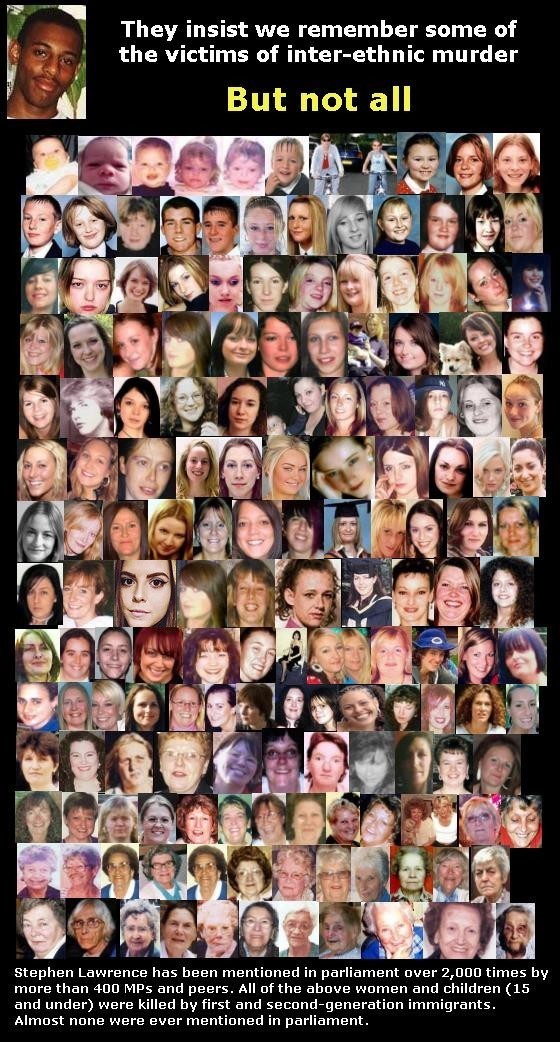




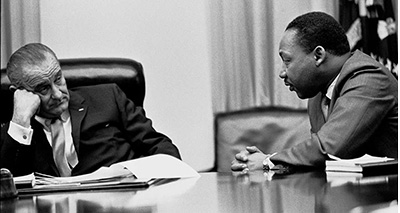


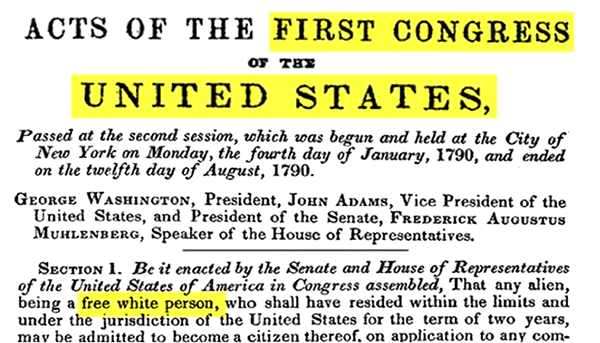


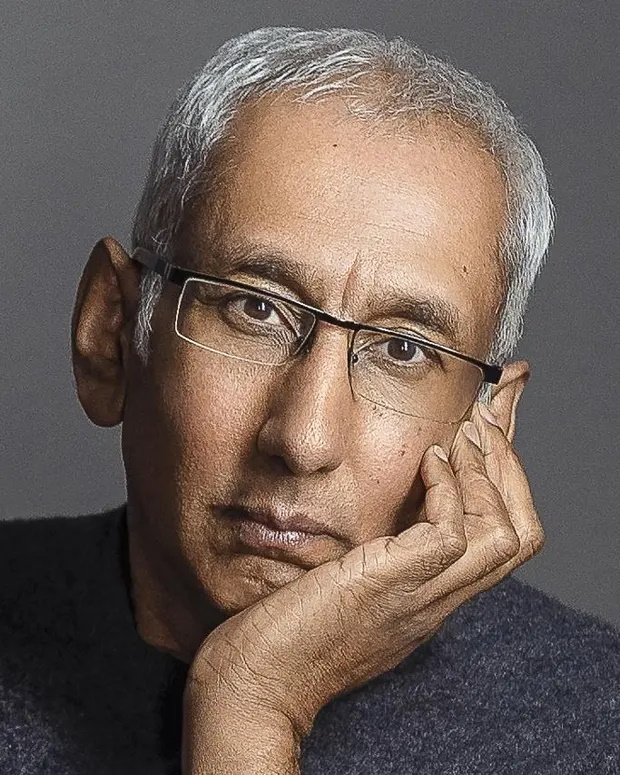 Kenan Malik, the silent ethicist
Kenan Malik, the silent ethicist Silence on slaughter, bullshit about Britain: Kenan Malik
Silence on slaughter, bullshit about Britain: Kenan Malik  Shrine to a murderous martyr: Mumtaz Qadri is venerated in modern Pakistan (image from
Shrine to a murderous martyr: Mumtaz Qadri is venerated in modern Pakistan (image from  Heroic Ilmuddin awaits martyrdom in a British jail (image from
Heroic Ilmuddin awaits martyrdom in a British jail (image from 
